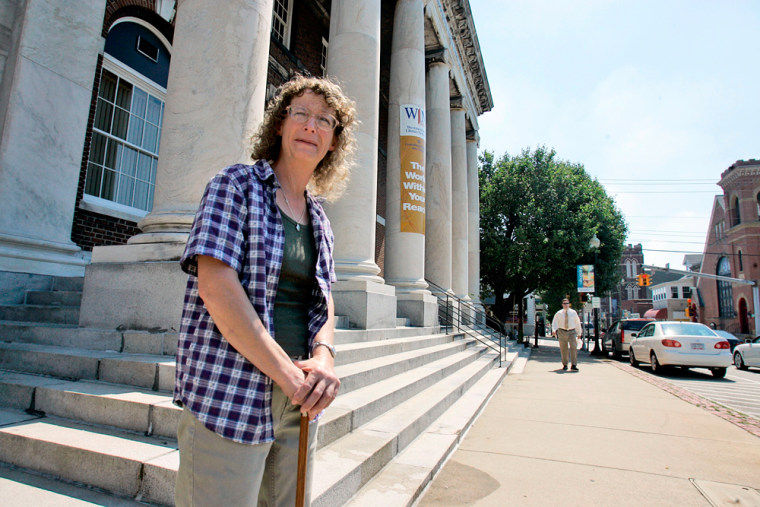Homeowners already pinched by high food and gas prices have grown increasingly anxious about staying warm this winter.
At state assistance offices and at community organizations, phones are ringing off the hook as people seek help with what are expected to be punishing heating bills. Legislators and governors from Alaska to Maine are watching the gap between surging need in their states, and assistance that may or may not be coming from Washington.
Aid agencies fear they may have to turn more people away, or give less cash assistance to individual families.
"People are very worried about this winter," said Ann Heidenreich, executive director of the nonprofit Community Energy Services in Canton, N.Y. "We're not going to deal with all that needs to be done, there's no way. We're going to have to deal with emergencies this winter."
The Energy Information Administration, a statistical division of the U.S. Department of Energy, projected last month that natural gas and heating oil will be at record highs this winter. In some cases, home heating oil, propane and kerosene is already twice as high as it was two years ago, meaning that a dollar of federal aid will not travel nearly as far this winter.
Making things worse is an economy that has left many more people without jobs, and left state treasuries bare.
Vermont budgeted $4 million to buttress federal Low Income Home Energy Assistance Program funds this winter, but that money has eroded along with the state economy, one official said.
"We were told nothing would be coming from state general fund dollars," said Richard Moffi, from Vermont's Office of Home Heating Fuel Assistance.
In Congress, members from the Northeast pressed unsuccessfully this summer to add billions to the LIHEAP program, which helps poor families with one-time fuel costs or a heating emergency, like a broken furnace. Last year, the federal government set aside $2.6 billion; this year President Bush has proposed just $2 billion, and it is unclear when Congress will act, or how much it will approve.
Connecticut legislators recently approved $44 million to help residents, schools and others with heating costs and weatherization while Vermont is trying to cull more firewood from state forests to heat homes.
Maine, which received $38 million last year from the federal government, would need $70 million just to deliver the same benefit in light of rising fuel prices, said Jo-Ann Choate, the manager of energy and housing services for the Maine State Housing Authority.
"This is a real crisis for the Northeast," she said.
Choate said many residents are carrying a past-due balance from last winter's bills.
Fuel expenses could skyrocket
On Tuesday, the EIA released data projecting that heating fuel expenditures for the average household using oil would increase 30 percent over last winter, and 19 percent for natural gas.
In northwest Montana, morning temperatures are dipping into the 30s. An elderly man who sought help from the nonprofit Northwest Montana Human Resources turned his furnace on twice in August and was stunned by a $70 bill.
"Conservation is the thing that I'm stressing the most," said Northwest's Kimberly DeWitt, who has been distributing energy-saving light bulbs, weather stripping and door sweeps paid for by a state program. "The increased energy costs are going to hit us all."
In Oregon, more people than ever have dialed community organizations seeking help. The nonprofit group Oregon HEAT added an unprecedented fundraiser in October — a golf outing — that it hopes will help spread the message of need to business leaders, the group's executive director, Roger Rees, said.
Northern Wisconsin's Marinette County held its biggest fundraising effort ever this summer to buy propane for dozens of low-income residents.
"An emergency that cost us $400 last year could cost us $700 this year," said Linda Djupstrom, the county's energy program supervisor. "I don't know what we'll do."
Alaska OKs energy assistance package
Several weeks ago, Alaska legislators approved a massive energy assistance package that will help rural villages borrow more money for bulk energy purchases and distribute $1,200 cash payment to most residents for utility bills.
The spiraling cost of fuel has pushed many people who do not qualify for LIHEAP to seek help.
After she spent the end of last winter shivering in her Belle Vernon, Pa., mobile home, Cindy Cross sought help this summer at a county assistance office. But the 47-year-old nurses' assistant was told that her $617 take-home pay every two weeks is above the state's threshold, which is about $15,600 a year before taxes for a single adult.
The approach of winter brings more anxiety. A minimum kerosene shipment of 75 gallons would cost more than half of her paycheck, most of which is already burned by the gas, insurance and monthly payment for the car she needs for the 20-mile trip to work.
By March, she could no longer afford a fill-up, so she bought an electric space heater and spent some nights at a 24-hour McDonald's.
"I'm basically just asking, asking around, seeing what are my options for this winter," Cross said. "It might come down to the fact that I might leave this mobile home."
Moffi, of Vermont's Office of Home Heating Fuel Assistance, said cash help for people who rely on home-heating oil and other liquid fuels will run out quickly if LIHEAP does not get a big boost.
"They shouldn't start going cold until Christmas," Moffi said. "Maybe they'll be warm on Christmas Day, but the day after Christmas, that fuel will be gone."
